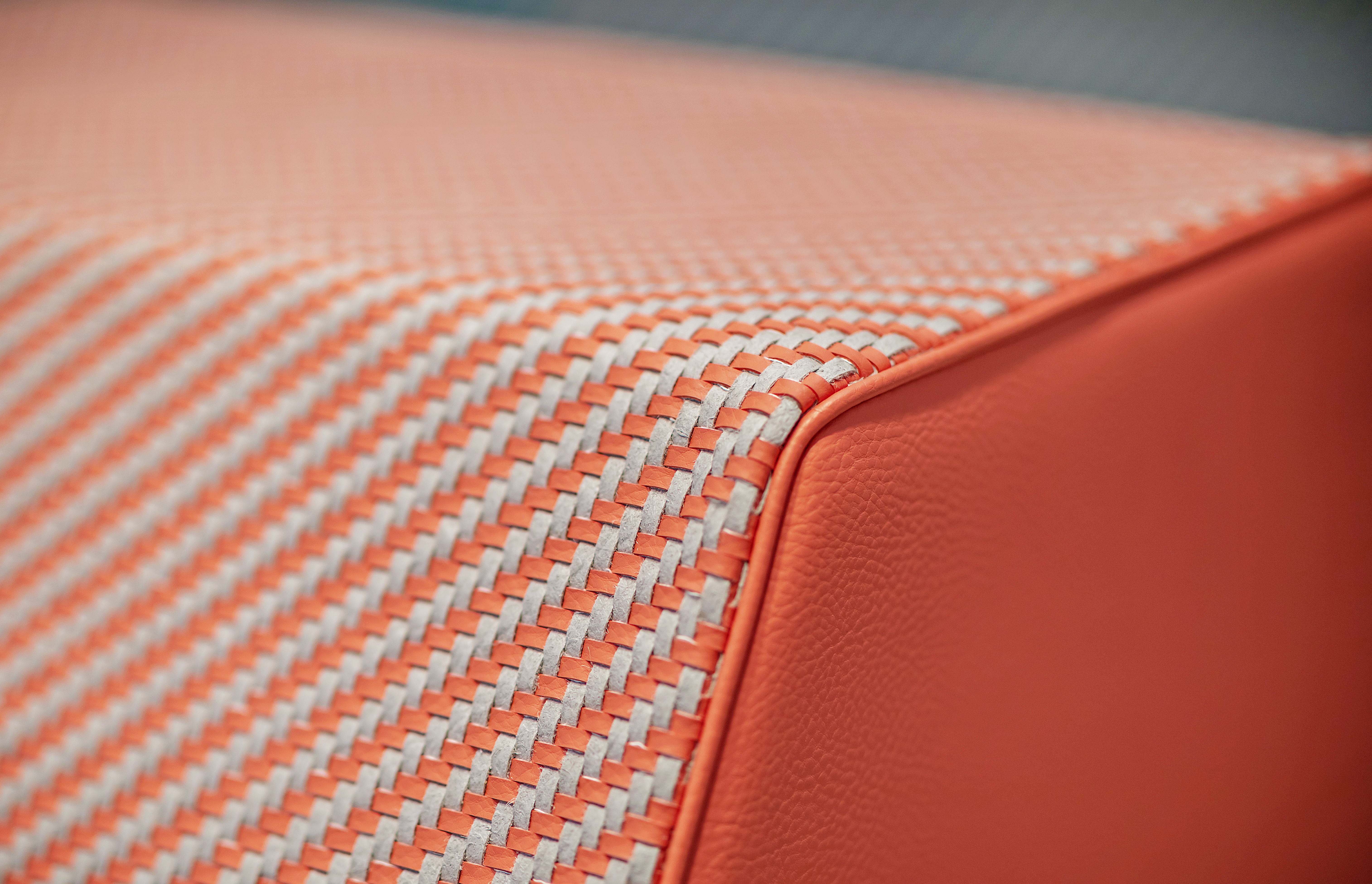“In the future, the car will be more like a living room,” says Stefan Webelhorst as he predicts future developments. He believes that the future lies in electromobility and the gradual ascent of autonomous driving, which means that the car’s occupants will have more choice about how to spend their time during a journey. With this in mind, the designers are taking inspiration from real living rooms and from fairs and expositions that specialise in housing. Obviously, they also cast their net more widely. “We need to spot trends and communicate them to our colleagues in other departments,” says Kateřina Vránová.
According to Stefan Webelhorst, cars of the future will offer a lot more opportunity for customisation. Instead of being limited to the size and power of the engine and several predetermined trim levels, customers will have more leeway to take their pick of designer solutions for the interior.
Textile made from pineapple leaves and zero km waste
Needless to say, the designers are also fully committed to environmental aspects. The current trend is to reuse recycled materials. ŠKODA cars will soon feature seat covers that use materials produced from recycled plastic bottles. Recycled fleece, familiar from warm clothing, is a decent replacement for the foam used inside seats. For the ŠKODA Color & Trim team, an important principle in recycling is “zero km waste”, i.e. the recycling of waste where it is generated, rather than transporting it halfway across the earth for “environmentally sound” treatment.
Piñatex, a textile made from pineapple leaf fibres, and interior colours based on fabrics made from soya or maize already exist. Another environmental alternative with a much greener production process is chrome.
 Piñatex, a textile made from pineapple leaf fibres
Piñatex, a textile made from pineapple leaf fibres
Nor have the designers forgotten about customers interested in pursuing a vegan lifestyle. These days, faux leather is virtually indistinguishable from genuine leather, both in look and touch. And touch is very important for the people at Color & Trim. While they work with advanced technology (for example, virtual reality is good at showing what the surface of a particular surface shape will look like if a specific material is used), they still need to take a literal hands-on approach when it comes to examining a material and its properties in detail.




 Kateřina Vránová
Kateřina Vránová
 Stefan Webelhorst
Stefan Webelhorst
























